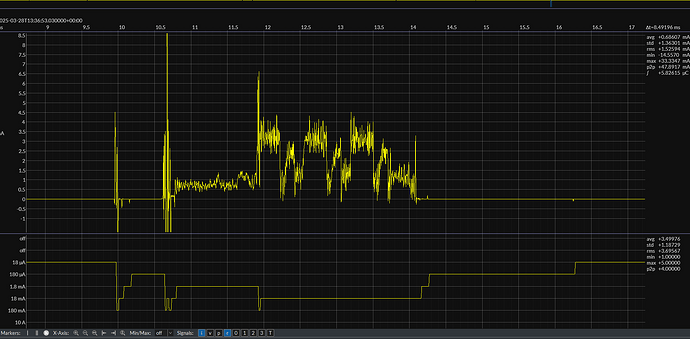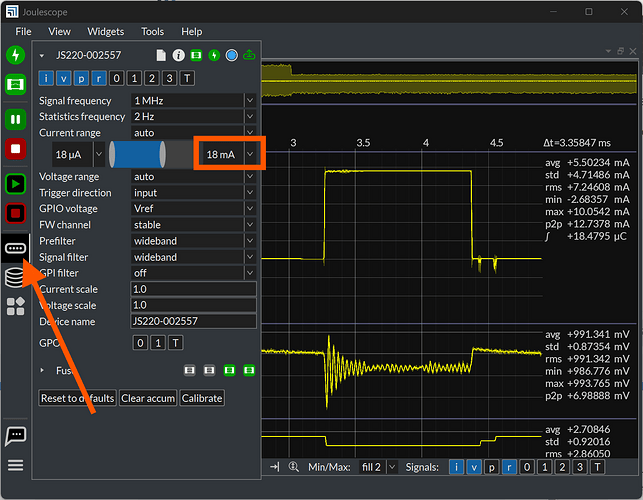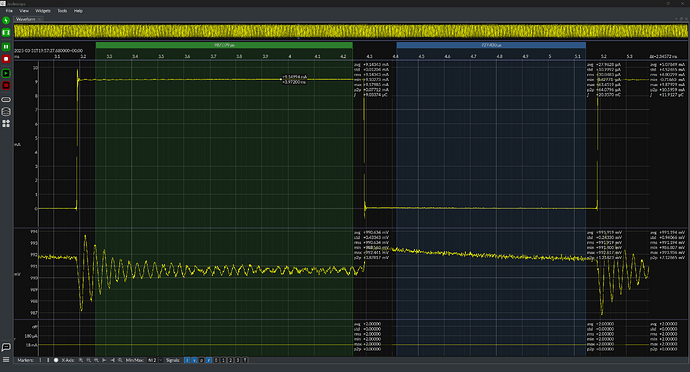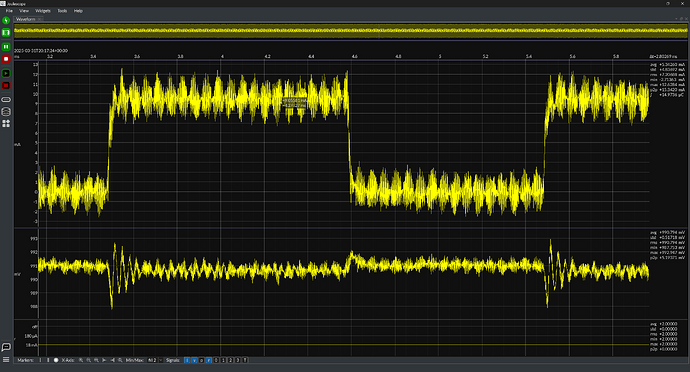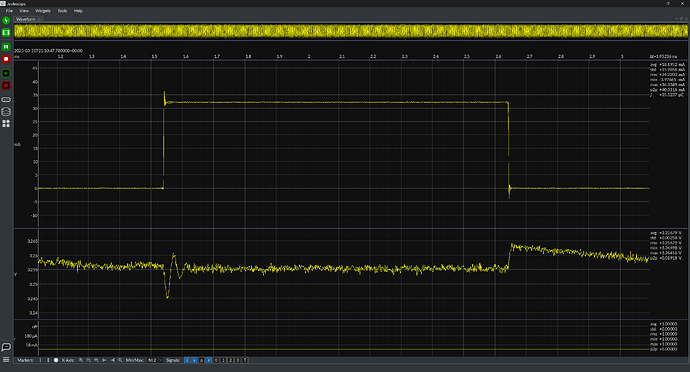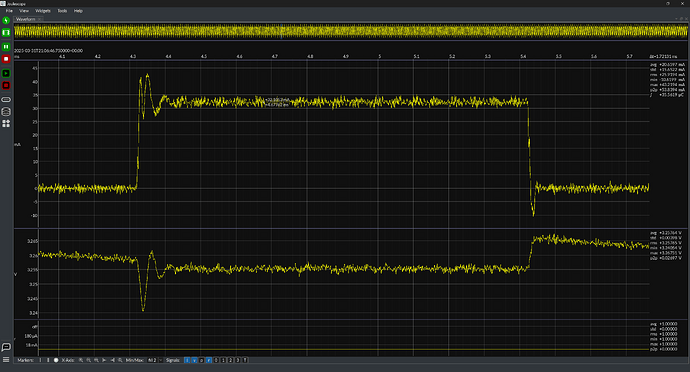Thanks for the JLS files @thanos_vgenis . From the PPK II Schematic, it uses a DMP1009UFDF-7 to select each current range. It’s driven by ADA4622-4ACPZ-RL.
The DMP1009UFDF-7 has 26 nC typical gate charge at 4.5 V gate voltage.
One thing you can do to improve JS220 accuracy for lower current systems is to set the maximum current range. In this case, you can likely set either 180 mA or 18 mA, liike this:
Can you try collecting one more scenario in the " * power supply → joulescope → PPK → DUT" setup? Can you set your JS220 to a fixed 18 mA range? If that saturates (the signal goes to 18.5 mA or higher), and you use the 180 mA range instead? This eliminates the JS220 autoranging from the equation to just see the PPK2 effects.
I set up a test to see what we should expect.
TLDR; this little test did not help gain any insight.
I configure the JS220 EVK1 like this:
evk.stop()
evk.off()
evk.power_ldo(1.0)
evk.pio_start_sequence(10_000, [[10, 100], [10, 1_000_000]])
Here is a waveform with the JS220 set to a fixed 18 mA range:
I then connect the PPK2 in Ammeter mode between the JS220.Current - and the EVK1 I-.
I do not see the PPK2 charge injection that I was expecting, but the signal is very noisy. It’s noisy enough to prevent the JS220 from autoranging when I set the JS220 back to auto. I have the JS220, EVK1 and PPK2 all connected to the same powered Anker USB Hub.
The next step is to figure out where the noise is coming from and reduce it. Unfortunately, I’m out of time for now

